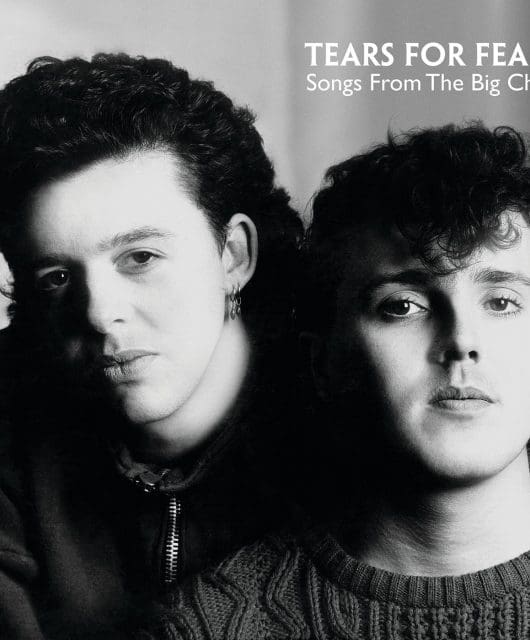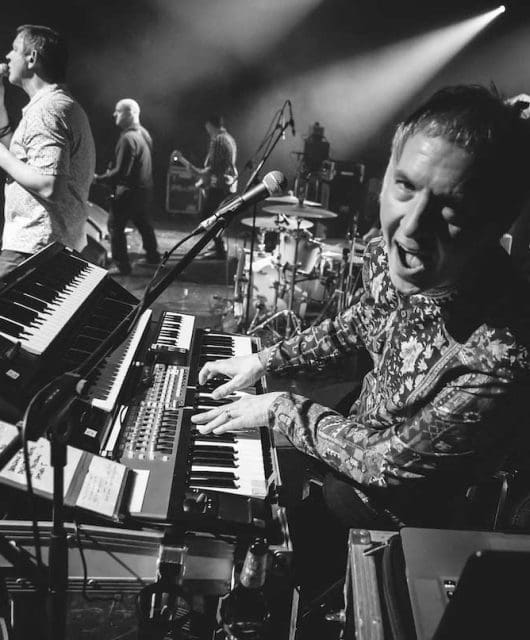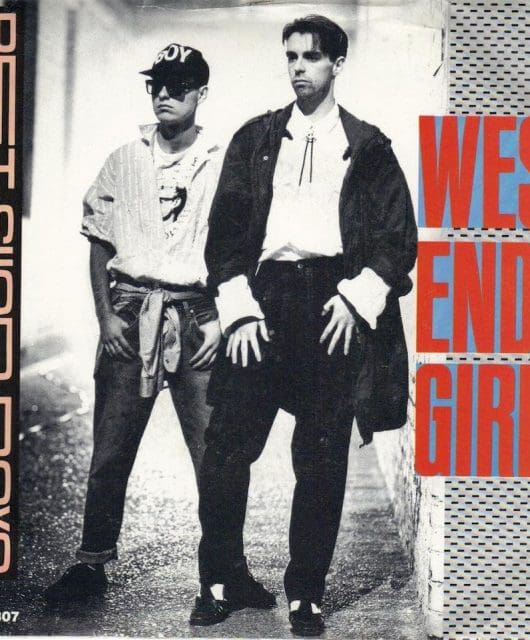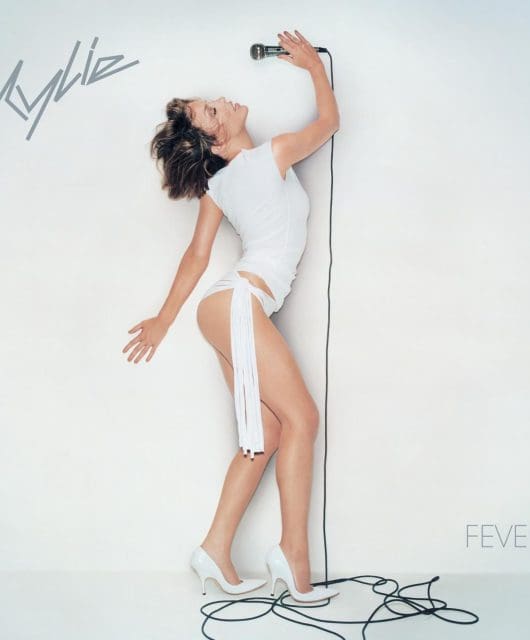David Bowie In The 90s
By Classic Pop | September 21, 2021
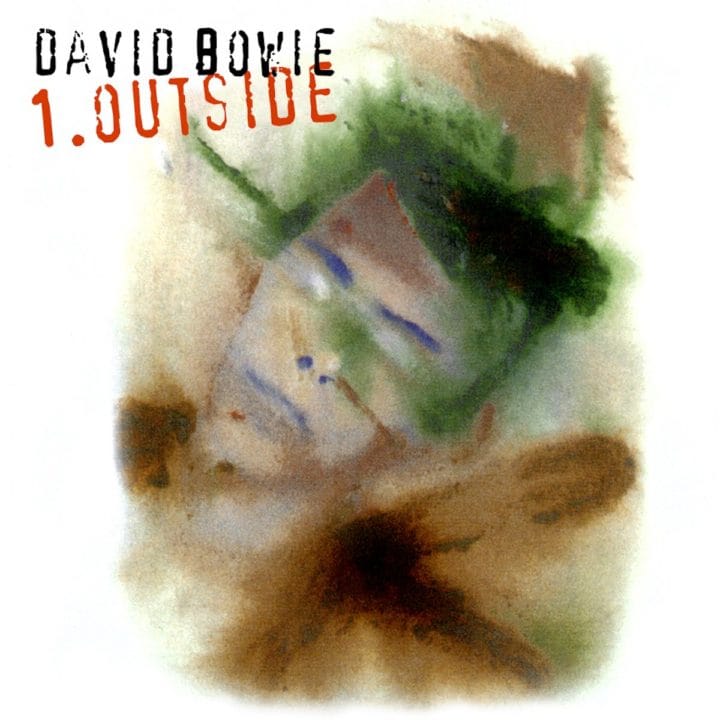
After a decade that saw him miscast as a mainstream pop performer, during which he paradoxically enjoyed major success, Bowie found his creative feet again in the 90s. Releasing a series of unconventional and defiantly challenging records, he regained his crown as the king of the avant-garde… By Pierre Perrone
“Being shoved into the Top 40 scene was an unusual experience,” David Bowie sometimes said about his “Phil Collins” years during the 80s, when he toured Let’s Dance and Never Let Me Down, and also charted with the serviceable Tonight album.
“It was great, I’d become accessible to a huge audience, but not terribly fulfilling,” the polymath said, reflecting upon the most visible yet least challenging period of his career. “It seemed so easy. It was cheers from the word go. You know how to get a reaction: play Changes, Golden Years and they’d be up on their feet.”
In the 80s, Bowie had appeared to be a relatively gregarious member of the mainstream pop elite, hanging out and duetting with the likes of Mick Jagger, John Lennon, Tina Turner and Queen. He’d even used the collective ’we’ when addressing audiences from the stage – pretending to be just one of the boys, a simple band member. In the 90s, however, and not for the first time – or the last, as it turned out – Bowie took a radical turn to the left.
DAVID BOWIE IN THE 90s: WHAT IT SAYS ON THE TIN
Bowie first met bassist Tony Sales and his younger brother, drummer Hunt Sales – the sons of US comedian and children’s TV favourite Soupy Sales – in the mid-70s. They all backed Iggy Pop on Lust For Life, the second and most significant of the singer’s post-Stooges releases because of its iconic title track, the urgency of which later fitted the opening sequence of Danny Boyle’s Trainspotting like a dirty glove.
“We went out and did a tour with David on keyboards, then we did a further tour with Iggy Pop,” Tony Sales told music writer Robin Eggar in 1991. “At soundchecks, the three of us would jam around. We were having fun with some other pieces of music that either David or we had written. We’d just mess around. We liked playing together. It was different stuff. We never talked about getting a band together, we figured that we’d run into each other and play a bit more…”
Happenstance did play a part in the way that musicians seemed to be drawn towards Bowie – the introduction of Reeves Gabrels, a painter turned avant-garde guitarist, being a case in point.
A hired hand on the Glass Spider tour, his wife Sarah simply gave her boss a cassette of Gabrels’ guitar musings. Having eventually listened to it, Bowie admitted that he “couldn’t believe the guitar playing. To look at Reeves you’d think, if he did play guitar, it would be Spanish classical!”
They all adopted the same informal approach for the genesis of Tin Machine – both the band itself and their eponymously titled debut album.
“It has a really interesting sound, the desperateness of four people trying to get their point known to each other,” Bowie said, regarding the Sales brothers’ role and how they fitted into the equation, “these guys had never met Reeves before. There was a lot of sparring going on. The music was the only cement between all of us. This is the first time I’ve not been the headline name in 25 years. It feels great. I’m in a band of very strong-willed people. Everybody gives opinions, but nobody gives orders.”
However, by early 1992, having served its purpose of side-stepping expectations, Tin Machine was dead and became a mere footnote in Bowie’s storied career. Bowie had too many other things going on in his life, both on a personal and professional level, to continue spinning the slightly crooked plates of Tin Machine throughout the 90s, even if Gabrels would spend the decade working by his side.
DAVID BOWIE IN THE 90s: VISION ON
“My heart was in the Sound + Vision tour,” Bowie stressed, when he was quizzed about the 1990 outing, which coincided with the boxset of the same title and marked the first chapter in the ongoing reissue programme of his classic albums that’s been with us in one way or another ever since.
“It was one of the best solo tours I’d done in years, the simplicity of design, the way it treated arenas, was among the most successful I or any other artist have been involved in. Anything of that size, you have to be aware of the kind of money you can make from it. I would have been a fool not to have done it.”
Regarding the four-piece group that accompanied him on the tour, which also featured the Switzerland-based multi-instrumentalist Erdal Kızılçay, Bowie said: “It was socially one of the most enjoyable tours ever. The people around were so giving and generous. Adrian Belew and his band.”
Possibly the most significant 12 months in Bowie’s personal life would be 1990, as it not only marked the 20th anniversary of his marriage to Angie – the mother of his son Duncan Jones, aka Zowie – and the 10th anniversary of their divorce, but it was also the year when he met the Somali-born supermodel Iman Mohamed Abdulmajid. At first, talk of a marriage for the twice-divorced Iman floundered on the fact that neither prospective partner had been introduced to each other’s family.
Always one for the grand gesture, Bowie presented his fiancée with two engagement rings – one with a 15-carat star sapphire surrounded by diamonds, and another set with a 14-carat ‘yellow canary’ diamond. They married at Lausanne City Hall, Switzerland in April 1992 and held a more informal and extravagant reception in Tuscany, Italy, the following June. The guests included U2’s Bono, Yoko Ono, Brian Eno and the fashion designer Valentino.
In between, there had been the little matter of the Freddie Mercury Tribute Concert for AIDS Awareness, which was held at London’s Wembley Stadium, to launch The Mercury Phoenix Trust, on April 20, 1992. Bowie’s light green suit may have been a fashion faux pas, but he was note-perfect as he duetted with Annie Lennox of Eurythmics on a version of Under Pressure that lived up to the 1981 original.
He also coralled Mick Ronson, former Mott The Hoople frontman Ian Hunter, and Joe Elliot and Phil Collen of Def Leppard for an anthemic All The Young Dudes, before bowing out with a memorable version of Heroes, again aided and abetted by Ronson.
Bowie’s subsequent reciting of The Lord’s Prayer that followed seemed ill-advised but, by then, with George Michael, Elton John, Guns N’ Roses frontman Axl Rose and Liza Minnelli queueing up to step into Freddie Mercury’s shoes, alongside the rest of Queen, not many cared. Bowie had paid a heartfelt tribute to Mercury but, on the night, he was definitely the star of the show.
DAVID BOWIE IN THE 90s: JUMP THEY SAY
Back in 1993, Bowie’s new-found happiness and renewed sense of purpose fed into the Black Tie White Noise album, his best since 1980. He pulled off the difficult trick of reconciling what seemed, on the surface, to be highly contrasting segments – including versions of Morrissey’s I Know It’s Gonna Happen Someday, The Walker Brothers’ Night Flights and Cream’s I Feel Free, the latter featuring Ronson, who sadly passed away a few weeks after the recording session.
The inclusion of I Feel Free was inspired, and justified by the fact that Bowie had taken his mentally troubled half-brother, Terry Burns, to see Cream in the mid-60s. In addition, the album’s lead single, Jump They Say, touched on Terry’s suicide, which took place in 1985.
Re-engaging with Nile Rodgers as producer also proved fruitful. “We both basically missed the same element with what was happening with the new R&B, which is now hip-hop and house,” Bowie explained. “What we were missing was the strong melodic content that was apparent in the 60s. I wanted to see if we could establish a new kind of melodic form of house.”
Their approach paid dividends throughout the album, especially on Jump They Say and the title track. The album saw Bowie picking up the sax again for several cuts, including the title track and Pallas Athena, an eerie, hypnotic, ambient outing.
“He’s not a saxophonist in the traditional sense,” mused Rodgers, “he uses his playing as an artistic tool.”
Black Tie White Noise itself blended Bowie’s saxophone and trademark vocals, allied to a Marvin Gaye-like R&B riff by Al B Sure!, who could have been sampling directly from What’s Going On. This atypical piece of social commentary recalled the blue-eyed soul of Young Americans, while the album was bookended by two compositions inspired by his marriage to Iman – The Wedding and The Wedding Song.
“I had to write music that represented, for me, the growth and character of our relationship. It really was a watershed,” he told David Sinclair, who accompanied Bowie on a tour of his old London haunts for Rolling Stone magazine in 1993. “It opened up a wealth of thoughts and feelings about commitment and promises, and finding the strength and fortitude to keep those promises.
“It all came tumbling out of me while I was writing this music for church. And I thought, ‘I can’t stop here. There’s more that I have to get out.’ For me, it was a tentative first step forward toward writing from a personal basis. It triggered the album.”
Read more: Making David Bowie’s Let’s Dance
Read more: Making David Bowie’s Scary Monsters (And Super Creeps)
DAVID BOWIE IN THE 90s: THE MAN WHO SOLD THE WORLD
By the spring of 1993, the British music scene was so in thrall to the first stirrings of Britpop that NME decided to arrange a joint interview between Suede frontman Brett Anderson and Bowie, one of his heroes. Bowie spotted how, since the 70s, the British music weeklies – which were then known as ‘the inkies’ – had accelerated the general level of musical hype and presciently quipped “that’s a fast event horizon if ever there was one!” about Suede’s much-lauded, eponymous debut album, which featured such tracks as So Young, Animal Nitrate, The Drowners and Metal Mickey.
NME’s idea of a ‘mutual appreciation society media match’ actually resulted in a good feature, and both Black Tie White Noise and Suede’s debut entered the UK album charts at No.1.
The success of Bowie’s album demonstrated how relevant he remained to many, making Nirvana’s MTV Unplugged version of The Man Who Sold The World – recorded in November 1993, six months before Kurt Cobain’s suicide – all the more apposite.
However, the same NME interview found Bowie taking no prisoners, stressing that he preferred Pixies to Nirvana, and also calling Evan Dando’s Lemonheads “the Lemon Trees”.
“I must say that I was disturbed to find out that Pixies had broken up,” he said about what was actually a hiatus rather than a split, albeit one which would last a decade. “That was the band I thought was going to happen in a big way, and I was a bit miffed when Nirvana came along using the same musical dynamics, keeping it down for a verse and then suddenly bursting out with the volume on the chorus. And, of course, Charles [Black Francis, aka Frank Black] was far better lyrically [than Kurt Cobain].”
Cementing Bowie’s position on the matter, in 2002, he actually went on to cover Cactus, from Pixies’ Surfer Rosa album of 1984, on his own Heathen set.
Bowie, who had a love-hate relationship with such suburban British locations as Aylesbury, Bromley and Croydon, couldn’t miss the opportunity to record the soundtrack to Roger Michell’s TV adaptation of the Hanif Kureishi novel, The Buddha Of Suburbia. With Naveen Andrews playing the title role, the BBC2 series was broadcast in four parts in 1993.
DAVID BOWIE IN THE 90s: YOU! OUTSIDE!
Black Tie White Noise and The Buddha Of Suburbia helped set Bowie’s agenda for the rest of his often musically surprising 90s period. Over the course of the decade, he issued another triptych of albums which, musically, were very different but were consistent in charting the journey of an artist who, once again, was ready to challenge the zeitgeist.
The Outside and Earthling albums enabled him to dabble with industrial, techno and house, and to assemble a new group to resume touring on a scale that he was comfortable with. Outside, 1995’s glorious return to the avant garde, also saw a return to working with Brian Eno – the creative collaborator who helped Bowie to conceive his classic ‘Berlin trilogy’ material.
Oft-underrated in the Bowie canon, as it sits between the more high-profile Black Tie White Noise and Earthling periods, Outside contained Bowie’s finest music in a long while. The gorgeous, reflective The Motel, the bass funk of
I Have Not Been To Oxford Town and a long-lost Bowie classic, Strangers When We Meet, illustrate a diverse musical landscape.
Outside is another concept album, which Bowie referred to as “A non-linear Gothic Drama Hyper-Cycle”, and remains a rewarding listen – in short, the album marked the return of Bowie as an innovator.
Hallo Spaceboy, although it was an entirely pleasurable sonic blitz on Outside, was remixed into a more palatable disco arrangement by long-time Bowie admirers the Pet Shop Boys and appeared as a single after the album’s release.
In 1996, the British music industry took stock of the overwhelming legacy that Bowie had already amassed, and he was honoured with a Brit Award for his Outstanding Contribution to Popular Music. If this was an unspoken suggestion that Bowie should rest on his laurels, it certainly didn’t register…
The resulting Outside tour was as uncompromising as the album – aligning himself with the alternative outfit Nine Inch Nails was a step too far for those in Bowie’s audience who preferred his more mainstream offerings.
However, Bowie wasn’t deterred from following his muse and 1997’s Earthling, though a more commercially successful record – one preceded by the infectious, chart-bothering single, Little Wonder – saw him move further into uncharted musical realms, incorporating a more drum & bass-influenced sound.
Once again, the Earthling album is often maligned as one of Bowie’s less successful experiments, yet gems abound, from the stomping onslaught of Looking For Satellites to the powerhouse chorus of Seven Days In Tibet and the paranoid I’m Afraid Of Americans, which was later remixed by Trent Reznor.
In 1996, Bowie was inducted into the Rock and Roll Hall of Fame by Talking Heads mainman David Byrne. The following year, for his 50th Birthday Concert at New York City’s Madison Square Garden, Bowie was joined by a wide gamut of contemporary rock and pop icons, including Frank Black, Foo Fighters, Robert Smith of The Cure, Sonic Youth, Lou Reed and Billy Corgan of Smashing Pumpkins.
As he hit 50, Bowie admitted that he felt “bouncy”, adding, “I don’t think there is much in my life that I would change”. He did consider a move back to London, but that was ruled out because of British celebrity culture, as he hated “having a camera lens stuck in either my face or my wife and child’s face every morning”.
The late-90s also demonstrated Bowie’s interest in different forms of media, as he busied himself in the traditional movie, television and theatre industries, and also with the then-emerging CD-ROM and internet technologies.
“It wasn’t the net that I got intrigued with first, it was the computer,” he explained. “My son had always been into computers. We’d fooled around with a couple of programs that he was working with, one called Kidpix, an art program for six-year-olds, and two more sophisticated ones, Painter and Photoshop. I started messing with those in the 90s – did a whole series of lithographs based on work I’d done on the computer.”
Sharp as a tack, Bowie instantly understood the advantages and drawbacks of the new internet technology, becoming the first artist to release his music online: Earthling’s lead single, Telling Lies.
DAVID BOWIE IN THE 90s: MY WORD IS MY BOND
In 1997, Bowie also turned into something of a financial wizard when he helped investment banker David Pullman develop the so-called ‘Bowie Bonds’ concept, to maximise the income from his lucrative song catalogue. An early example of celebrity bonds, the ‘Bowie Bonds’ were securities based on the current and future revenues from the 287 original compositions included on the 25 albums (including compilations) that Bowie had released before 1990 – it was a groundbreaking concept.
Bowie saw out the decade with his 21st studio album, Hours…, a return to more straightforward songcraft than its 90s predecessors. Bowie seemingly underlined this by growing his hair out to a length not seen since the cover of 1971’s Hunky Dory.
Hours… made history in music industry terms by being the first album to be available to download in its entirety before its physical release. The material that made up the album was originally created to soundtrack the futuristic Blade Runner-esque video game The Nomad Soul, before being re-worked with lusher arrangements. It featured some of Bowie’s finest 90s compositions, including the gorgeous Survive, the quirkily off-kilter Something In The Air and the reflective sorrow of Thursday’s Child.
While perhaps not Bowie’s most ‘exciting’ record, it’s a worthy listen, which holds up well and served as a pre-amble to the more sonically abundant Heathen, his magisterial follow-up of 2002.
In hindsight, Bowie’s 90s, though significantly more creatively prolific than the 80s, didn’t quite match up to his artistic highs during the 70s. However, there’s much to love in Bowie’s work from the decade and a great deal of material that, as time goes on, may increasingly be favourably re-appraised.
Read more: The Story Of The New Romantics
Check out David Bowie’s website here


